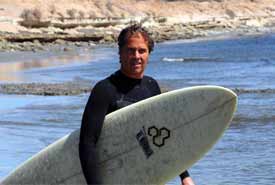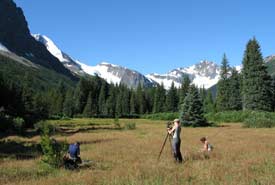Taking in the tides

Jonathan White: writer, sailor, marine conservationist (courtesy JW)
Jonathan White has a lifelong love for the sea. Growing up on the beaches of southern California, he has explored salt water on sail boats, many of which he’s built, and has surfed in oceans around the world. These experiences have given him a healthy respect for the power of the ocean. But one experience in particular inspired him to dive deep into the forces that are the beating heart of our oceans: the tides. After running aground in a large, unexpected tide in Alaska and nearly losing his 65-foot schooner, Jonathan dedicated himself to researching the mysterious pull of the ocean tides all over the world.
Ten years of study took Jonathan to five continents, where he was met with the “largest, fastest, scariest and most amazing tides in the world.” It was in China where he saw the world’s largest tidal bore — a 25-foot wave rolling in at around 32 kilometres an hour. In the Arctic he followed an Inuit Elder into the air pocket under the ice at low tide to hunt for mussels, and he investigated new tidal energy projects in Chile and Scotland. The result of these adventures is a compelling exploration of tides around the world: Tides: the Science and Spirit of the Ocean.
One reviewer had this to say about Jonathan’s book: “Tides is an enriching meditation on the motions, eccentricities, and ebbs and floods of the 71 percent silent majority covering the planet’s surface. In clear, poetic verse, White paints the ocean for what it really is: less a static mass and more a living, breathing being swayed by the rhythms of the universe that, in ways large and small, interconnects all life on Earth.”
Tides has been awarded a 2017 National Outdoor Book Award for best Natural History Literature, and is a finalist for a Pacific Northwest Booksellers Association best book of 2017.
Jonathan will be sharing stories about his adventures with tides at NatureTalks: Cider and the Sea on November 28 at Sea Cider Farm and Ciderhouse in Victoria, BC.
An excerpt from the book
The following excerpt from Tides: the Science and Spirit of the Ocean is set in the Skookumchuck Narrows in Sechelt Inlet, just north of Vancouver on the BC coast:
“Fast Water”
The safest thing to do is wait for the current to subside. But then I realize there might be one more option, one that tantalizes me.
I circle the skiff to study the midchannel current, which arches like a large tongue over Skookumchuck’s sill. This is where the current is moving fastest, but it’s also less turbulent than the whitewater at its edges. If I can get out there to the midchannel without capsizing or being swept downstream, and if I can point the bow directly into the current and hold it there, I might have a chance. The question would then be: does my outboard have enough power to make headway against the tide? If it doesn’t I’ll have to come about like my father and I did on Yaculta. I’d be catapulted downstream, where I’d have to wait for the next tide change.
I can’t resist trying. I back up as far as I can and, at full throttle, jump the skiff over the tongue’s edge and land with the bow facing the full force of the tide. Immediately the skiff slips backward as if losing power, taking a wave over the stern. The water’s added weight could mean the difference between making it or not, so I bail frantically with one hand as I keep the other on the throttle.
The water is alive. Boils spill upward, bulging and pulsing, tearing at the surface and throwing spray three or four feet in the air. One of these boils lifts the boat unexpectedly and sets it down a few feet to starboard, then shoves it ahead the same amount. Seconds later, a whirlpool sucks the skiff down to the gunwales, as if caught in a vacuum. I gain a little, then fall back, always gauging my progress against the trees on shore. Am I passing them, or are they passing me?
After bailing the boat dry, I kick the gas tank toward the bow and lean forward to pick up a little more speed. I pass a tree, slowly. Then another. One tree at a time, I finally make it to the lee shore of Tremble Island.
Relieved and exhausted, I hike to the island’s crest and sit, letting my fingers sink into the warm moss. The moon is well up and the narrows are glistening in the light. As I watch, mesmerized by Skookumchuck’s power and beauty, I think of how scientists often talk about the tide’s “cascading energy” from the moon to the deep ocean, to the shallow continental shelves, to the wind turbulence of hourglass narrows, and finally to the smallest whirlpools and eddies that curl along shore. We can think of it in reverse, too: every dimple of tension hints at something bigger. In the smallest eddy, we find the moon.


